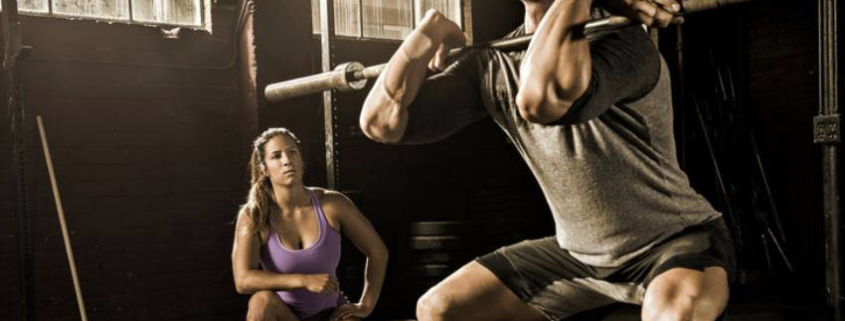Squats may help your back
“Very few exercises are as natural as the squat. Since the very beginning of time, man has been squatting down to pick berries, gather food, light fires and cook. It makes sense then that the squat builds pure functional strength. Not only do they build huge amounts of muscle, squats also force your body’s nerve networks to work your muscles more efficiently.”
The squat is fundamental movement that is vital for the health of your spine. Everyone should be able to perform a squat in order to be able to cope with the physical demands of everyday life.
Squatting is a compound exercise that utilises your entire body as a complete unit. The hips and legs push the weight up and the trunk and back muscles stabilise your back.
Every healthy toddler will instinctively squat instead of bend and usually with near perfect form when picking something up. Their muscles are capable and their joints biomechanically efficient to perform the movement, however as we age we pick up bad habits – sitting at a desk for 8 hours a day shortens our hip flexors, and inappropriate gym routines focused on isolating muscles and performing non-functional movement may lead to a dysfunctional movement patterns and ultimately – injuries. If you have to pick up a heavy object from a floor, but unable to squat down, you would probably bend over and lift with your back. Your back is not designed to weight bear in bending position. It will strain your back! Here is the proper lifting technique to help reduces the chance of injuring oneself.
Stand with feet shoulder width apart, toes pointing forward, keeping your chest lifted which will help your spine maintain the correct natural curves. It’s important to keep your back flat, with a natural lower back arch as you squat with your bottom pushed out behind you.
Bend first at the hips, as if you were sitting backwards onto a chair. With an eventual 30-45 degree lean forward as if you were skiing. Squat only to the depth you back can handle before tucking. It may seem natural to lower your bottom down towards the floor. But to target your buttock muscles it’s really important that you hinge at your hips and drive your hips back and down. The squat should be a hip-dominant exercise and not a knee-dominant exercise. Follow this with the knees bending but ensuring your knees do not move forward over the feet or toes. An easy way to make sure your knees are less likely to venture forward towards your toes is to load your weight on your heels instead of your toes
Lower to the point that you feel you are able to maintain a curve in your lumbar spine with your back straight. Try stopping before you reach the chair. Push through both heels equally and bring your hips through as you rise.
Loading the spine whilst allowing the pelvis to ‘tuck’ will produce strain and compression on the lower back joints, discs, muscles and ligaments.. Repetitive bending should be avoided.
If you want become a better athlete no other exercise will improve your overall athleticism like the squat. Squatting helps you build explosive strength that carries over to most competitive sports.
As part of assessment osteopaths may check a patient’s ability to squat, getting up and down from sitting. It is essential to be able to squat correctly to avoid getting back pain and other injuries however sometimes there are knee structural issues that won’t allow for squatting. Osteopaths understand the biomechanics of the body and treat ligament, muscle and joint injuries as well as help prevent injuries.
View a list of common complains that Osteopathy can assist with
Discovery the benefits of Osteopathy
- What is Osteopathy?
- Adult health issues
- Babies and Children
- During and after pregnancy
- Common Complaints
- Testimonials
- Sports Injuries
- Genral Osteopathy FAQs
- The Science & Reasearch



